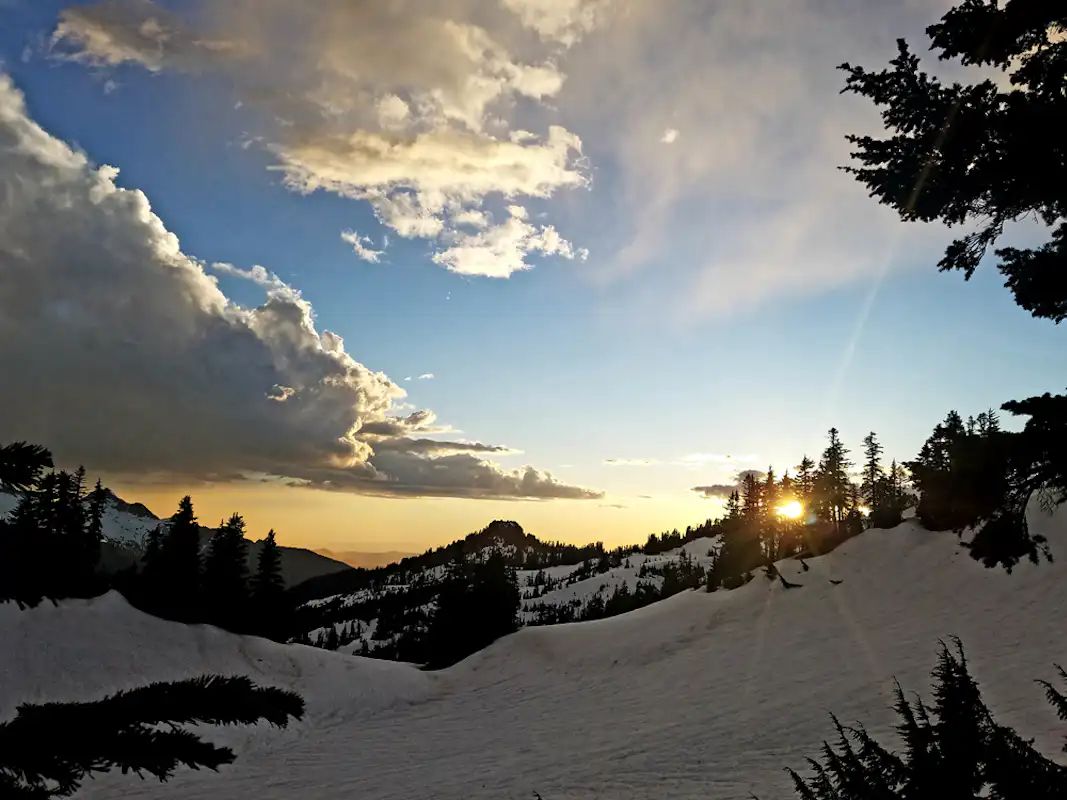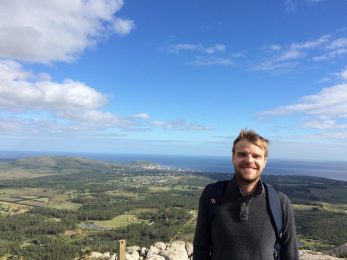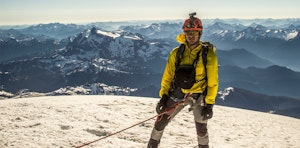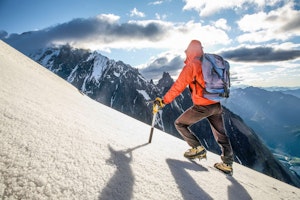Situated in the northern reaches of Washington State, in the heart of the Cascade Range, climbing Mount Baker has long been an objective for mountaineering enthusiasts.
Rising to 3,286 meters (10,781 feet) in elevation, Mount Baker is the third highest peak in Washington and the fifth-highest in the Cascade Range. On a clear day, its dual summited silhouette can be seen from as far away as Seattle (112 kilometers/70 miles).
Since the peak was first climbed by a team of English alpinists in 1868, Mount Baker has become a popular destination for mountaineers of every level. The heavily glaciated peak – only Mount Rainier is more glaciated – offers numerous routes to the summit, each of which are perfectly suited for climbers of varying ability levels.
Keep reading: 7 Incredible Mountains to Climb in the U.S.
The rewards for making it to the summit of Mount Baker are also well worth the effort of climbing. The views over the rest of the Northern Cascades are simply breathtaking. On a clear day, it is possible to see all the way south to Mount Rainier as well as out over the San Juan Islands in the Haro Strait.
Many aspiring mountaineers also head to Mount Baker for their first ascents, learning the necessary glacier travel, snow, and ice climbing techniques during the trip. The steep slopes of the active stratovolcano are also ideally suited for crevasse and avalanche rescue courses as well.
Regardless of when or why you decide to come to Mount Baker for a mountaineering experience, below we’ve included some useful information to help you plan and make the most out of your trip!
Where is Mount Baker?
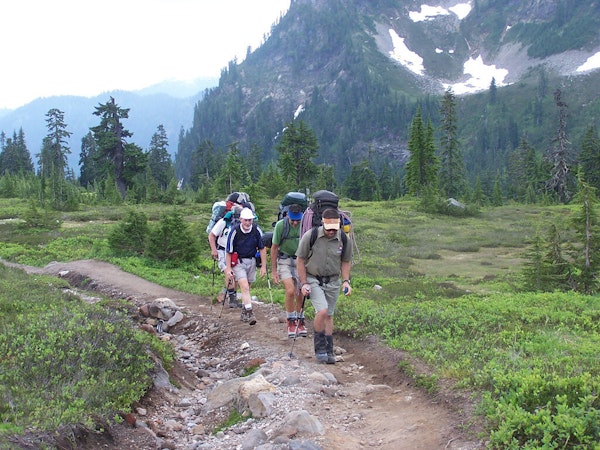
Mount Baker sits at the very north of Washington state in Whatcom County, just 15 kilometers (9 miles) south of the Canadian border. In spite of its closer proximity to Vancouver than Seattle, it is easiest to reach Mount Baker from the latter.
Starting from downtown Seattle, it takes at least three hours to reach the trailhead parking lot of Mount Baker. The fastest route is to head north on I-5 before turning east onto State Route 9 north and then merging onto State Route 542 east.
Many guides will offer to meet with you in Seattle and provide transport (sometimes at an extra cost) to the trailhead. If this is not the case, it is easiest to rent a car from Seattle-Tacoma International Airport (SEA) and drive yourself. Public transport in the north of the state is limited.
How long does it take to climb Mount Baker?
Depending on the type of trip you plan to undertake on Mount Baker, most climbing experiences range from 2 to 3 days in length.
The first day is spent driving to the trailhead and hiking to the base of one of the mountain’s glaciers. This is where you will set up camp and leave most of the heavy gear during the ascent.
On 2-day trips, the second day begins before dawn as you head out onto the glacier and begin climbing toward the summit. You generally reach the top of Mount Baker by mid-morning and after enjoying the views, climb back down to camp and then hike out to the trailhead (this is what you do on the third day in the longer program).
For the 3-day trips, the second day is generally spent on one of Mount Baker’s glaciers, practicing all the necessary ice and glacier climbing techniques as well as going over some self-rescue and safety skills. That night will be spent at the camp at the base of the glacier or at a high camp up above the glacier.
What are the main Mount Baker climbing routes?
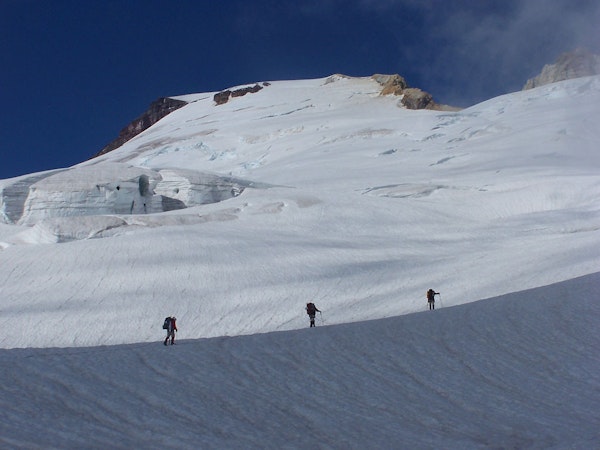
1| Coleman Deming
Approaching Mount Baker from the south and climbing via the southwestern edge of the Coleman Glacier, the Coleman Deming route is a popular but challenging route for beginners and intermediate mountaineers alike.
Starting from the Schreibers Meadow trailhead, the climb up the route begins with a 4 to 5-hour hike to the base of the glacier. For beginners, the rest of the day is spent practicing ice and glacier climbing.
The second day is then spent out on the glacier doing some more work on ice climbing as well as learning some crevasse safety and self-rescue techniques. More advanced climbers can head to the summit on the second day and return to Seattle in the evening.
The third day is generally summit day, however. This begins with a pre-dawn start with climbers getting to the top by mid-morning. After enjoying the views from the summit, climbers will return to base camp before hiking back out to the trailhead.
2| Heliotrope Ridge
Also known as the North Side Route, climbing Mount Baker via the Heliotrope Ridge is one of the most popular ways to get to the summit. This route generally takes 3 days and is best suited for intermediate-level mountaineers.
The trip begins with a 3 to 4-hour hike from the Heliotrope Ridge trailhead to the toe of the Coleman Glacier. The following day, climbers ascend through snowfields to the Colfax Col and on to the summit plateau. After skirting the bottom of the plateau, there is a brief descent to the Sherman camp, where you will spend the night.
The following day begins with an early start and a 3 to 4-hour ascent of the Roman Wall, after which point you will arrive at the summit. After taking in the views, you will descend back down to the first camp and hike out to the trailhead.
3| Easton Glacier
Widely considered to be one of the easiest routes to the summit of Mount Baker, the Easton Glacier route is the one most frequently attempted by novice mountaineers. The climb from this side generally takes 3 days but can be done in 2 days by more experienced climbers.
The ascent begins with a 3 to 4-hour hike from the Schreibers Meadow trailhead to the camp at the base of the Easton glacier. The rest of the afternoon is then spent practicing glacier and ice climbing techniques.
The second day begins with a pre-dawn start onto the glacier. For most novice mountaineers, it takes between 5 and 7 hours to reach the summit. After enjoying the views from the top, climbers will descend back to camp.
The following day, climbers will pack up camp and hike back out to the trailhead. (More experienced climbers can generally do both day 2 and 3 in a single day.)
How difficult is it to climb Baker? What kind of training do I need to do before climbing?
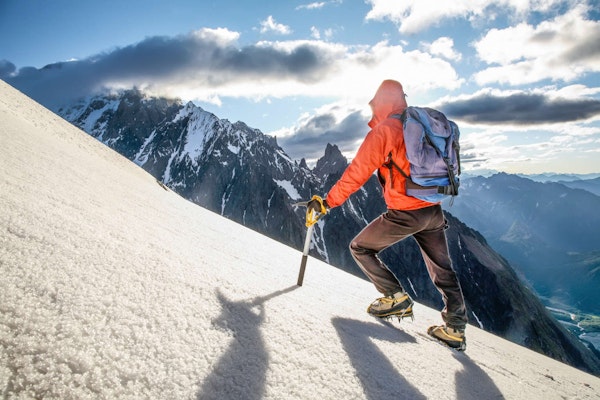
As has been previously mentioned, Mount Baker offers several different routes up to the summit that are perfect for both intermediate and novice mountaineers. All the technical ice climbing and glacier travel skills can be taught on the mountain.
However, the climb does require a high level of fitness and it is recommended that all participants have previous backpacking and hiking experience.
Most guides recommend training for about 10 weeks prior to the date of your climb. Over this period of time, you will steadily increase your leg and cardiovascular strength through running and carrying 20 kilograms (41 lbs) packs at altitudes above 1,000 meters (3,280 feet).
Mountaineering courses on Mount Baker
Along with being a popular peak to climb, Mount Baker is also a great place to learn the necessary mountaineering skills that are required for tougher climbs, such as Mount Rainier.
Many people opt to head to the slopes of Mount Baker for both crevasse rescue and glacier ice climbing courses. Lasting for 2 or 3 days, these courses combine classroom-like explanations with real world experience.
Both courses involve learning how to use a pulley system, basic self-arrest techniques as well as rope management. Where they differ is in terms of the level of putting these skills to the test.
For aspiring mountain climbers, many guides also offer mountaineering skills courses on Mount Baker. These range from weekend-long crash courses to week-long introductory courses.
In some form or another, both will go over the basics of glacier travel, some crevasse rescue techniques, setting up camp and leave no trace camping lessons, wilderness navigation, rappelling and rope climbing skills.
Equipment
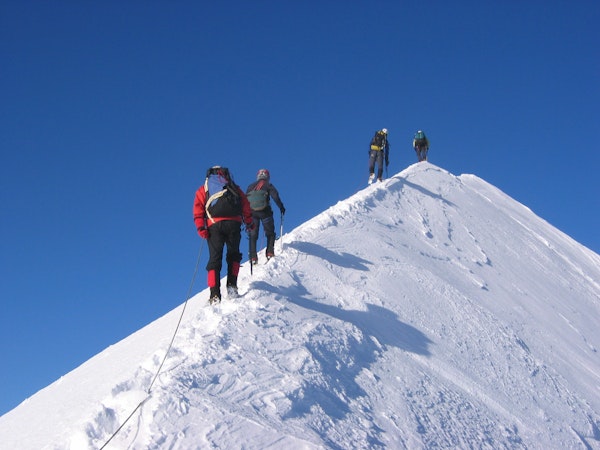
The success of any trip to Mount Baker is partially dependent on coming prepared. The following list is recommended by guides that head to the top of the peak each year.
Some of the technical equipment may be included in the trip price other times, it may be rented at an additional cost. Always be sure to double-check with your guide to know what you need to bring for the trip and what they will provide.
Miscellaneous
65 to 75-liter backpack with a waterproof cover
Bowl (for food), thermos and utensils
Headlamp
Insect repellant
Lip balm
Personal first aid kit
Sunscreen
Toiletry kit
Water bottles
Water purification tablets
Climbing gear
Alpine climbing harness
Belay device
Climbing helmet
Crampons with an anti-balling plate
Ice axe
Locking carabiners x2
Non-locking carabiners x2
Perlon accessory cord (1.2 meters/4 feet)
Trekking poles
Clothing
Balaclava
Glacier glasses
Knit cap
Visor hat
Liner gloves
Outer gloves
Hiking boots
Hiking socks, synthetic or wool
Liner socks
Mountaineering boots
Shoes or sandals for camp
Fleece windbreaker
Hardshell jacket
Hardshell pants
Long-sleeve base layer
Nylon shorts
Softshell jacket
Softshell pants
Sports bras, synthetic
T-shirts, synthetic
Winter coat
Inflatable sleeping pad
Thermal sleeping bag
Weather and Best Season to Climb

The most popular time of year to head to Mount Baker is from June to August, the peak summer months. However, different types of trips are offered year-round.
During the three summer months, temperatures at the base of Mount Baker hover between 10 ºC and 15 ºC (50 ºF and 60 ºF) and steadily decrease as you gain in altitude.
Summer is also the driest time of year, when the mountain receives an average of 50 to 90 millimeters (2 to 3.5 inches) of precipitation each month.
During the spring and autumn, aspiring mountaineers often head to the slopes of Mount Baker for avalanche and crevasse rescue courses. Temperatures are colder and rain is more likely, making the climate ideally suited for those preparing for mountaineering challenges in more adverse conditions.
Once winter comes around, more advanced climbers head to the peak for a challenge. Ski touring trips to the top of Mount Baker and ice climbing adventures up to the summit are both quite popular.
How much does it cost to climb Mount Baker?
The cost for booking a trip with a certified guide to the summit of Mount Baker varies depending on what is included in the cost of the trip, how many people are climbing and the itinerary. However, you may expect to spend roughly $1,000 to $1,500 per person.
This may include the mountain guide’s fee, transportation to the start of the trip, entrance and permit fees, food, camping gear and technical equipment. Some of this may be included in the price of the trip and some may need to be purchased or rented beforehand.
Always remember to confirm with your guide what is included in the price of the trip and what is not.
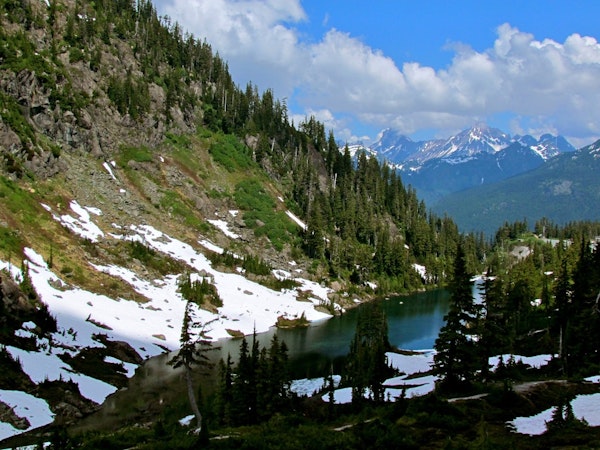
Situated in the heart of the stunningly scenic North Cascades, Mount Baker is waiting for both avid and aspiring mountaineers to come and climb it.
Don’t hesitate a moment longer and book your next mountain climbing adventure to wonderful Washington state now!
